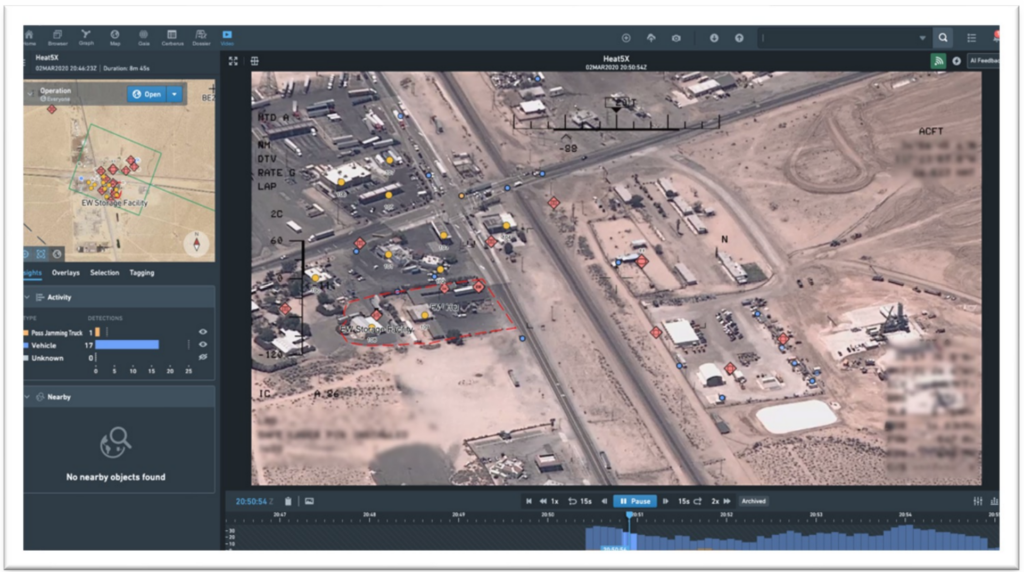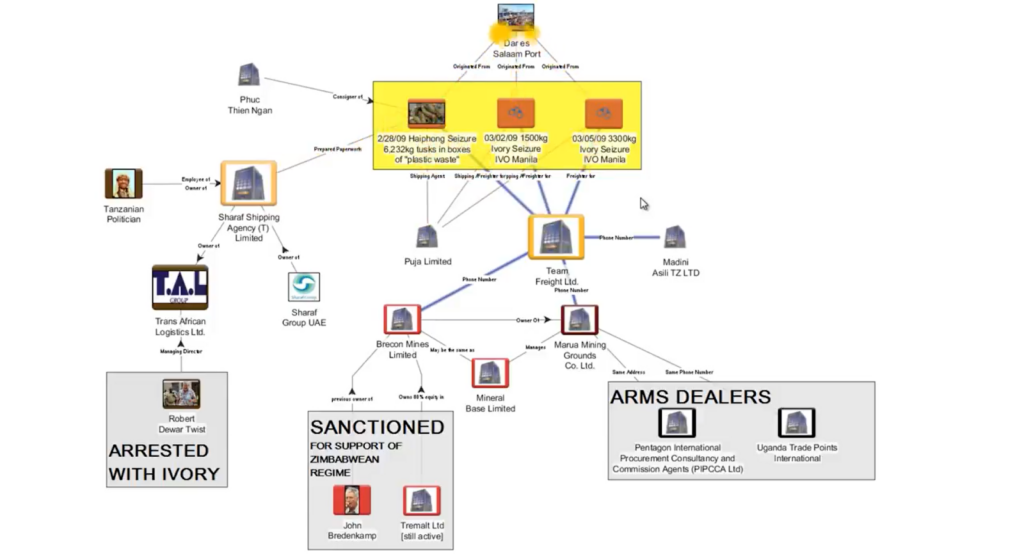Palantir: A software that safes and takes lives

Software designed for counterterrorism and surveillance commercially available. Palantir changes how leading institutions solve critical data challenges while dividing public opinion.
A SECRETIVE COMPANY?
Palantir builds digital infrastructure for data-driven operations and decision making. Their products serve as the connecting interface between their customer’s data, its analytics capabilities, and operational execution. Palantir’s platforms tie these aspects together by bringing the right data to the right people, allowing them to take data-driven decisions, conduct sophisticated analytics, and refine operations through feedback.1 Palantir currently operates three software platforms that they think of as operating systems:

As one of their two flagship products, Foundry handles massive-scale analytics to build the foundation for successful deployment of AI and ML applications in the commercial sector. However, Palantir’s main business has long been with institutions that required exceptional confidentiality such as defense and intelligence. Gotham thereby serves as a centralized operating system for sensitive government data and as an exciting use case for AI.2 Apollo as Palantir’s third main product is an infrastructure and continuous delivery platform. It allows Foundry and Gotham to be run and updated in environments that the public cloud cannot reach like submarines or classified government clouds for instance.5
Submarines and national intelligence? This sounds exciting. What’s really behind this secret software and who decides which organizations get to use it?
GOTHAM – IGNORE THE CITY OF BATMAN
Gotham is an AI-enabled data solution designed for global defense, international intelligence, and law enforcement organizations. The platform integrates, manages, secures and analyzes near-real time data to improve situational awareness, anticipate possible outcomes, and suggest courses of action to outmatch the adversary in the battlefield.3
ACCELERATED MISSION PLANNING
Gotham empowers analysts and operators to exploit live operating pictures that integrate all-domain historical data, as well as streaming data from sensors. As missions are planned and executed, Gotham enriches the plans with live sensor and AI insights to provide sophisticated recommendations and options to optimize decision making. All actions within operations are captured and fed back into the AI-model so that they are continuously refined based on the behavior of the customer.4

SIMULATION AND RECOMMENDED COURSE OF ACTION
As new field information enters control centers, commanders quickly need scenario plans in order to ideally respond. AI-enabled decision modeling in Gotham generates scenarios and helps users evaluate which course of action is most effective based on live all-domain data. For example if there is a detection of enemy forces, Gotham simulates how long it would take to remove own troops out of the danger zone and what the best extraction route is given terrain specifics, refueling options or air coverage.4

THE NEADLE IN THE HAYSTACK
Gotham makes Artificial Intelligence and Machine Learning operational by deploying its software on top of a trustworthy data foundation of its customers. This allows the software to extract siloed data from disparate, pre-existing sources to find, track, and identify patterns of enemy organizations. It can for instance combine and link income statements from companies with suspects’ telephone numbers to come up with hidden connections human beings would waste weeks and months to search for.7

CONTINUOUS STRATEGIC EFFECTS ANALYSIS AND LEARNING
By capturing every decision and its corresponding responses from friend and enemy, Gotham helps commanders understand the combined effects on adversaries across operations. For instance by conducting AI-enabled analysis on operational cadence, time to approval, completion and outcomes, organizations can identify possible friction or novel enemy patterns to further enhance the organization’s and Gotham’s insights.4

BUSINESS MODEL AND VALUE CAPTURE
Since Palantir has many long-term relationships with various layers of government it makes it difficult to find a unified business model. Furthermore, it is important to note that almost all Gotham solutions are bespoke to their customers in one way or another which usually leads to huge contracts such as the recently closed deal with the U.S. defense department worth $229 million for one year.6 Nevertheless, what is attractive from Palantir’s point of view is the fact that its business is extremely sticky. Meaning that once Gotham is integrated into an organizations operations, it becomes increasingly difficult for future competitors to displace their services.8
CHALLENGES AND OPPORTUNITIES
As Palantir is a B2G (Gotham) as well as a B2B (Foundry) company, its target markets are quite substantial giving them many opportunities to grow. On the flip side, much revenue of government contracts means that Palantir is highly concentrated and dependent. They have tackled this problem in the past with the implementation of Foundry which allowed them to make a more public appearance leading to a broader acceptance. However, I would well advise them to further develop this product to expand its commercial customer base and generate a broader revenue structure.
While nationwide security projects are arguably an attractive market, ethical issues are most likely to arise when it comes to expansion. For critics, the work with police departments has been of particular concern. This involves using analysis to identify places and individuals who are likely to be subjects of crime. Critics believe this encourages aggressive tactics and reinforces racial biases. On a broader scale, they worry that weapons designed for counterterrorism and surveillance should not be used on American streets and certainly not offered for international sale.10
We understand that all technology, including ours, is dangerous, and that software can be used as a weapon. Lives have been saved and taken as a result of our products.
Alex Karp (CEO palantir) 9
Palantir recognizes these problems and has rejected several prospects such as the Saudi or Chinese government out of concerns about the potential misuse of their technology. However, the fact that Palantir is a non-governmental commercial business technically allows them to work with a wide variety of countries, giving them potentially enormous power in future conflict resolution. Therefore, they issued the rule to not engage with governments whose positions or actions are considered inconsistent with their mission to support western liberal democracy and its strategic allies.11
Nevertheless, I believe that these somewhat secretive connections to various governmental organizations are damaging to Palantir’s image in the public sector. I think a repositioning of the company or even a separation of the Gotham service is an option that could be beneficial for the company in the long run. In addition, blog campaigns could lead to a more trustworthy image which could accelerate the commercial adoption of their non-governmental services in the public sector.
What do you think about Palantir and its options? I am curious to hear your opinions.
Sources:
(1) Palantir is Not a Data Company (Palantir Explained, #1) | by Palantir | Palantir Blog
(2) Offerings | Artificial Intelligence & Machine Learning (palantir.com)
(4) Gotham_AI-Enabled_Operations_White_Paper.pdf (palantir.com)
(5) The Bear Case for Palantir in 2021 (publiccomps.com)
(6) Palantir Extends US Defense Contract That Prompted Protest at Google – CNET
(7) The World Needs Palantir – But Do You? | Kelvestor
(8) Palantir Technologies: Understanding Its Immense Potential (NYSE:PLTR) | Seeking Alpha
(9) 2022 ANNUAL LETTER FROM CEO ALEX KARP | ENGLISH (PALANTIR.COM)
(10) Does Palantir See Too Much? – The New York Times (nytimes.com)
(11) “We Have Chosen Sides”: 6 Things We Learned About Palantir (techmonitor.ai)



Such an interesting company and solution, thank you for bringing it up. You do say in the article “Palantir recognizes these problems and has rejected several prospects such as the Saudi or Chinese government out of concerns about the potential misuse of their technology.” – I wonder what are your thoughts on a non-government person / commercial company /CEO to make a decision of who is the bad guy and who is the good guy. There are multiple conflicts within the world, some at a global scale, some within the borders of the same government (and it is not always very clear who is correct and who is wrong); and we have seen time and again foreign governments trying to profit from such “opportunities” by selling weapons, information or through some other means. We are now looking at a model where private people get to make the same decisions.
Also, looking at their commercial model: they can only scale either by increasing their share of wallet with existing customers, or by increasing the customer base. But by increasing the customer base basically they run a risk of making the solution irrelevant and bringing everyone in conflict on a same playing field (not desirable for anyone who is at war). How would you see them addressing this risk?
Oh wow, this is both really cool and slightly terrifying. I definitely have concerns about the prospect of using this technology for police work. I could easily see a situation in which biases in both the AI models and in law enforcement lead to the over-policing of marginalized communities. I also share Irina’s concern about a private company deciding which governments and conflicts can leverage this very powerful technology. Thanks for sharing Yannik.